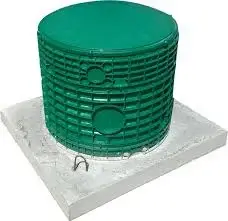Introduction
When it comes to managing the unsung heroes of our homes – the septic tanks – homeowners often find themselves delving into the mysterious world beneath their lawns. In this subterranean realm, septic tank extenders, or as they are commonly known, septic tank risers, emerge as champions in the quest for efficient waste management. Let’s unravel the story of these silent but essential components, exploring their pros, cons, costs, and their impact on the appearance of our homes.
Septic Tank Extenders: The Pros
1. Accessibility and Convenience
One of the prime advantages of opting for septic tank risers is enhanced accessibility. Traditionally, septic tanks are buried beneath layers of soil, making any maintenance or inspection a cumbersome task. With risers in place, accessing the tank becomes as easy as lifting a lid. This proves to be a time-saver and a relief for homeowners and maintenance professionals alike.
2. Time and Cost-Efficiency
Installing septic tank risers might seem like an additional expense initially, but the long-term benefits outweigh the costs. Routine maintenance, inspections, and pump-outs become more efficient, translating into savings in both time and money. It’s an investment that pays off over the lifespan of your septic system.
3. Durability and Longevity
Septic tank risers are typically made from durable materials such as high-density polyethylene (HDPE). This ensures longevity, even in harsh underground conditions. Unlike traditional lids that may corrode or degrade over time, risers withstand the test of time, providing a reliable and durable access point to your septic system.
4. Environmental Friendliness
In an era where environmental consciousness is paramount, septic tank risers contribute to eco-friendly practices. Regular maintenance facilitated by risers prevents septic system issues from escalating, reducing the likelihood of harmful leaks and contamination. By investing in risers, homeowners play a role in preserving both their property and the surrounding environment.
Septic Tank Extenders: Navigating the Downsides
1. Initial Cost
While the long-term savings are undeniable, the upfront cost of installing septic tank risers can be a deterrent for some homeowners. The expense involves the purchase of the risers themselves, professional installation, and any necessary adjustments to the existing septic system. However, it’s crucial to view this as an investment in the overall health and efficiency of your septic system.
2. Aesthetic Impact
For those who take great pride in the appearance of their lawns, the visibility of septic tank risers might be a concern. These extensions, rising above the ground, are functional but might not contribute positively to the overall aesthetics of the landscape. However, there are decorative covers available that can mitigate this issue, adding a touch of style to the functional aspect of the risers.
3. Potential for Lid Damage
Though the materials used in manufacturing septic tank risers are robust, there is still a possibility of lid damage. This can occur due to external factors such as heavy machinery or accidental impact. Homeowners should exercise caution when conducting activities near the risers to prevent any damage to the lids, ensuring the continued effectiveness of their septic system.
Septic Tank Extenders: Cost Considerations
The cost of septic tank risers varies based on factors such as material, size, and installation requirements. On average, homeowners can expect to invest a few hundred dollars for the purchase and installation of a riser. While this may seem steep initially, the long-term benefits in terms of maintenance efficiency and system longevity make it a cost-effective choice.
Septic Tank Extenders: The Aesthetic Dilemma
Balancing functionality and aesthetics is a common challenge for homeowners considering septic tank risers. However, with the availability of decorative covers and creative landscaping ideas, it’s possible to integrate these risers seamlessly into your outdoor space. Consider them as an opportunity to showcase your creativity while ensuring the smooth operation of your septic system.
Septic Tank Extenders: FAQs
Septic Tank Extenders: Final Thought
In conclusion, septic tank risers, despite a few drawbacks, prove to be indispensable in optimizing the functionality and longevity of your septic system. As homeowners weigh the pros and cons, it’s crucial to view risers as an investment that pays off in the long run. The convenience, cost-efficiency, and environmental benefits far outweigh the initial concerns, making septic tank risers a wise choice for those looking to elevate their septic system game.

